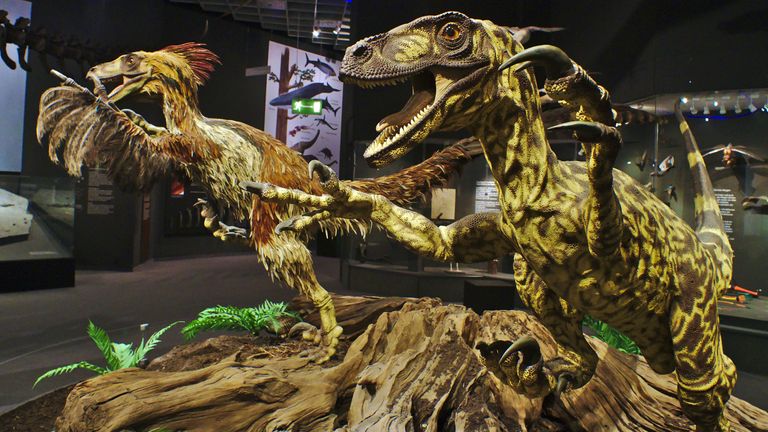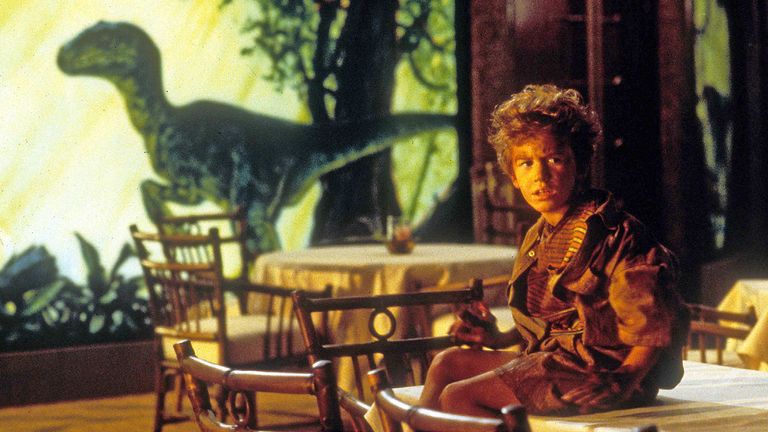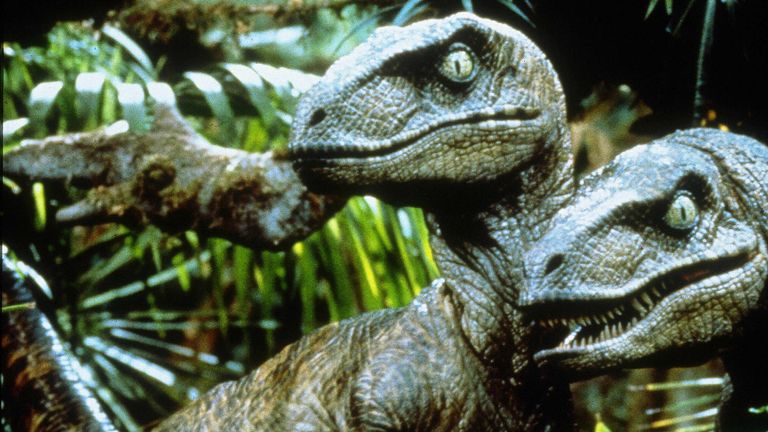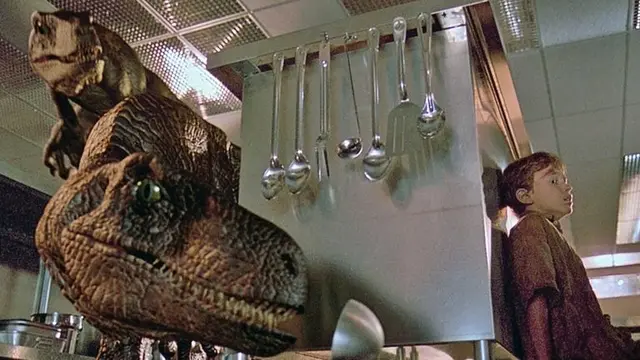Scientists have challenged a key plot point of the 1993 blockbuster Jurassic Park with new research suggesting raptors hunted alone rather than in packs.
In defence of Steven Spielberg, the film was somewhat accurate for the scientific knowledge of its time, except for the size of the raptors.
But recent evidence has suggested that not only were they more likely covered in feathers than scales, but also hunted much more like Komodo dragons or crocodiles than in large packs like wolves.

Image:Modern feathered and outdated scaly raptor models. Pic: Westphalian Museum of Natural History
The raptors in the film - actually based on the species deinonychus antirrhopus ("terrible claw" in Latin) rather than the velociraptor ("swift seizer") - are intelligent predators which collaborate to hunt.
But the evidence for this behaviour "is not altogether convincing" according to Dr Joseph Frederickson, a palaeontologist at the University of Wisconsin Oshkosh.
"The problem with this idea is that living dinosaurs (birds) and their relatives (crocodilians) do not usually hunt in groups and rarely ever hunt prey larger than themselves," said Dr Frederickson, lead author on the study.
"Further, behaviour like pack hunting does not fossilise so we can't directly test whether the animals actually worked together to hunt prey."
He added: "Since we can't watch these dinosaurs hunt in person, we must use indirect methods to determine their behaviour in life."
The scientists have come up with a clever indirect method for figuring this out.
"We proposed in this study that there is a correlation between pack hunting and the diet of animals as they grow," said Dr Frederickson.

Image:The dinosaurs were actually covered in feathers. Pic: Moviestore/Shutterstock
The scientists noted how, in Komodo dragons, the infant reptiles are constantly at risk of being eaten by the adults - so they climb up trees, where they eat food unavailable to their larger parents on the ground.
This dietary diversity generally isn't shown in animals which hunt in packs.
"If we can look at the diet of young raptors versus old raptors, we can come up with a hypothesis for whether they hunted in groups," Dr Frederickson said.
So the researchers analysed the chemistry of fossilised raptor teeth, especially from deinonychus, which existed in North America during the Cretaceous Period, up to 115 million years ago.
"Stable isotopes of carbon and oxygen were used to get an idea of diet and water sources for these animals. We also looked at a crocodilian and an herbivorous dinosaur from the same geologic formation," he said.

Image:Evidence that the dinosaurs hunted in packs is weak, say researchers. Pic: Moviestore/Shutterstock
They found that Cretaceous crocodilians, much like modern species, show a difference in diet between the smallest and largest teeth, indicating a distinct transition in diet as they grew older.
"This is what we would expect for an animal where the parents do not provide food for their young," Dr Frederickson said.
"We also see the same pattern in the raptors, where the smallest teeth and the large teeth do not have the same average carbon isotope values, indicating they were eating different foods.
"This means the young were not being fed by the adults, which is why we believe Jurassic Park was wrong about raptor behaviour," he concluded.
 简体中文
简体中文

